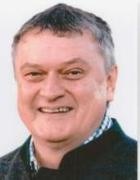Hadronenstruktur und Fundamentale Symmetrien
Prof. Stephan Paul
Forschungsgebiet
Our group involved in a number of research projects dealing with high energy particle physics and neutron physics.
Adresse/Kontakt
James-Franck-Str. 1/I
85748 Garching b. München
+49 89 289 12572
Fax: +49 89 289 12570
Mitarbeiterinnen und Mitarbeiter der Arbeitsgruppe
Professor
| Photo | Akad. Grad | Vorname | Nachname | Raum | Telefon | |
|---|---|---|---|---|---|---|

|
Prof. Dr. | Stephan | Paul | 263 | +49 89 289-12571 |
Sekretariat
| Photo | Akad. Grad | Vorname | Nachname | Raum | Telefon | |
|---|---|---|---|---|---|---|

|
Karin | Frank | 265 | +49 89 289-12572 |
Wissenschaftlerinnen und Wissenschaftler
| Photo | Akad. Grad | Vorname | Nachname | Raum | Telefon | |
|---|---|---|---|---|---|---|

|
M.Sc. | Julien | Beckers | 548 | +49 89 289-12484 | |

|
M.Sc. | Christian | Dreisbach | 273 | +49 89 289-12575 | |

|
M.Sc. | Katarina | Dugic | – | +49 89 289-12675 | |

|
M.Sc. | Dominik | Ecker | 558 | +41 22 76 76466 | |

|
M.Sc. | Karl | Eichhorn | – | +49 89 289-12575 | |

|
PD Dr. | Jan | Friedrich | 564 | +41 75411 2863 | |

|
Sergei | Gerassimov | – | +41 22 767 7773 | ||

|
Dr. | Daniel | Greenwald | 275 | +49 89 289-12569 | |

|
Dr. | Erwin | Gutsmiedl | 271 | +49 89 289-14464 | |

|
M.Sc. | Philipp | Haas | 548 | +49 89 289-12484 | |

|
M.Sc. | Peter | Hinderberger | 276 | +49 89 289-12379 | |

|
M.Sc. | Florian | Kaspar | 558 | +49 89 289-12592 | |

|
M.Sc. | Marcel | Lesch | – | +49 89 289-14356 | |

|
M.Sc. | Martin | Losekamm | 257 | +49 89 289-12584 | |

|
Dr. | Thomas | Pöschl | 574 | +49 89 289-12588 | |

|
M.Sc. | Andrei | Rabusov | 568 | +49 89 289-12587 | |

|
Dmitry | Riabchikov | 568 | +49 89 289-12587 |
Studierende
| Photo | Akad. Grad | Vorname | Nachname | Raum | Telefon | |
|---|---|---|---|---|---|---|

|
Anil | Adigüzel | – | – | ||

|
B.Sc. | Martin | Bartl | – | – | |

|
Jacqueline | Dellith | – | – | ||

|
M.Sc. | Katarina | Dugic | – | +49 89 289-12675 | |

|
Lukas | Grußbach | – | – | ||

|
Moritz | Gundel | – | – | ||

|
Quentin | Heinze | – | – | ||

|
Simon | Helbing | – | – | ||

|
Nan-Hee | Kang | 548 | +49 89 289-12484 | ||

|
Juna | Kreka | – | – | ||

|
Godo | Kurten | – | – | ||

|
Marc-Philipp | Tillschneider | – | – |
Andere Mitarbeiterinnen und Mitarbeiter
| Photo | Akad. Grad | Vorname | Nachname | Raum | Telefon | |
|---|---|---|---|---|---|---|

|
Thomas | Deuschle | – | +49 89 289-14262 | ||

|
PD Dr. | Boris | Grube | 574 | – | |

|
Dr. | Bernhard | Ketzer | – | – | |

|
Igor | Konorov | 573 | +49 89 289-12574 | ||

|
PD Dr. | Oliver | Kortner | – | +49 89 323 54-240 | |

|
Dr. | Fabian Michael | Krinner | 276 | – | |

|
Thomas | Lierenfeld | – | – | ||

|
Andrei | Maltsev | – | – | ||

|
Felix | Mindl | – | – | ||

|
Dr. | Rüdiger | Picker | – | – | |

|
Uwe | Reichwald | – | – | ||

|
Dennis | Salazar | – | – | ||

|
Dr. | Wolfgang | Schott | 271 | +49 89 289-12567 | |

|
Dr. | Hadwig | Sternschulte | – | – | |

|
Rainer | Stoepler | – | +49 89 289-14272 | ||

|
Prof. Dr. | Till | von Egidy | – | – | |

|
M.Sc. | Stefan | Wallner | 279 | – |
Lehrangebot der Arbeitsgruppe
Lehrveranstaltungen mit Beteiligung der Arbeitsgruppe
Abgeschlossene und laufende Abschlussarbeiten an der Arbeitsgruppe
- Study of K-pi+ and pi-pi+ Amplitudes in K-pi-pi+ Data from the COMPASS Experiment
- Abschlussarbeit im Bachelorstudiengang Physik
- Themensteller(in): Stephan Paul
- Characterization and Evaluation of Hardware Accelerators for the On-board Data Processing of the AFIS Satellite Mission
- Abschlussarbeit im Masterstudiengang Physik (Kern-, Teilchen- und Astrophysik)
- Themensteller(in): Stephan Paul
- A Universal Approach for Particle Identification at Belle II Using Neural Networks
- Abschlussarbeit im Masterstudiengang Physics (Applied and Engineering Physics)
- Themensteller(in): Stephan Paul
- Selection of $\tau^\mp -> K^\mp \pi^\mp\pi^ \pm\nu_\tau$ Decays for Data from the Belle~II Experiment
- Abschlussarbeit im Bachelorstudiengang Physik
- Themensteller(in): Stephan Paul
- Study of the π⁻π⁺ Subsystem with JPC=1-- in the Diffractively Produced π⁻π⁺π⁻ Final State at COMPASS
- Abschlussarbeit im Masterstudiengang Physik (Kern-, Teilchen- und Astrophysik)
- Themensteller(in): Stephan Paul
- Improved Design of a Compact Scintillating-Fiber Detector for the AFIS Mission
- Abschlussarbeit im Masterstudiengang Physik (Kern-, Teilchen- und Astrophysik)
- Themensteller(in): Stephan Paul